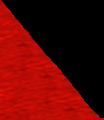| The famous experiments that psychologist
Harry Harlow conducted in the 1950s on maternal deprivation in rhesus
monkeys were landmarks not only in primatology, but in the evolving
science of attachment and loss. Harlow himself repeatedly compared
his experimental subjects to children and press reports universally
treated his findings as major statements about love and development
in human beings. These monkey love experiments had powerful implications
for any and all separations of mothers and infants, including adoption,
as well as childrearing in general.
In his University of Wisconsin laboratory, Harlow probed the nature
of love, aiming to illuminate its first causes and mechanisms in
the relationships formed between infants and mothers. First, he
showed that mother love was emotional rather than physiological,
substantiating the adoption-friendly theory that continuity of care—“nurture”—was
a far more determining factor in healthy psychological development
than “nature.” Second, he showed that capacity for attachment
was closely associated with critical periods in early life, after
which it was difficult or impossible to compensate for the loss
of initial emotional security. The critical period thesis confirmed
the wisdom of placing infants with adoptive parents as shortly after
birth as possible. Harlow’s work provided experimental evidence
for prioritizing psychological over biological parenthood while
underlining the developmental risks of adopting children beyond
infancy. It normalized and pathologized adoption at the same time.
How did Harlow go about constructing his science of love? He separated
infant monkeys from their mothers a few hours after birth, then
arranged for the young animals to be “raised” by two
kinds of surrogate monkey mother machines, both equipped to dispense
milk. One mother was made out of bare wire mesh. The other was a
wire mother covered with soft terry cloth. Harlow’s first
observation was that monkeys who had a choice of mothers spent far
more time clinging to the terry cloth surrogates, even when their
physical nourishment came from bottles mounted on the bare wire
mothers. This suggested that infant love was no simple response
to the satisfaction of physiological needs. Attachment was not primarily
about hunger or thirst. It could not be reduced to nursing.
Then Harlow modified his experiment and made a second important
observation. When he separated the infants into two groups and gave
them no choice between the two types of mothers, all the monkeys
drank equal amounts and grew physically at the same rate. But the
similarities ended there. Monkeys who had soft, tactile contact
with their terry cloth mothers behaved quite differently than monkeys
whose mothers were made out of cold, hard wire. Harlow hypothesized
that members of the first group benefitted from a psychological
resource—emotional attachment—unavailable to members
of the second. By providing reassurance and security to infants,
cuddling kept normal development on track.
What exactly did Harlow see that convinced him emotional attachment
made a decisive developmental difference? When the experimental
subjects were frightened by strange, loud objects, such as teddy
bears beating drums, monkeys raised by terry cloth surrogates made
bodily contact with their mothers, rubbed against them, and eventually
calmed down. Harlow theorized that they used their mothers as a
“psychological base of operations,” allowing them to
remain playful and inquisitive after the initial fright had subsided.
In contrast, monkeys raised by wire mesh surrogates did not retreat
to their mothers when scared. Instead, they threw themselves on
the floor, clutched themselves, rocked back and forth, and screamed
in terror. These activities closely resembled the behaviors of autistic
and deprived children frequently observed in institutions as well
as the pathological behavior of adults confined to mental institutions,
Harlow noted. The awesome power of attachment and loss over mental
health and illness could hardly have been performed more dramatically.
In subsequent experiments, Harlow’s monkeys proved that “better
late than never” was not a slogan applicable to attachment.
When Harlow placed his subjects in total isolation for the first
eights months of life, denying them contact with other infants or
with either type of surrogate mother, they were permanently damaged.
Harlow and his colleagues repeated these experiments, subjecting
infant monkeys to varied periods of motherlessness. They concluded
that the impact of early maternal deprivation could be reversed
in monkeys only if it had lasted less than 90 days, and estimated
that the equivalent for humans was six months. After these critical
periods, no amount of exposure to mothers or peers could alter the
monkeys’ abnormal behaviors and make up for the emotional
damage that had already occurred. When emotional bonds
were first established was the key to whether they could
be established at all.
For experimentalists like Harlow, only developmental theories verified
under controlled laboratory conditions deserved to be called scientific.
Harlow was no Freudian.
He criticized psychoanalysis for speculating on the basis of faulty
memories, assuming that adult disorders necessarily originated in
childhood experiences, and interpreting too literally the significance
of breast-feeding. Yet Harlow’s data confirmed the well known
psychoanalytic emphasis on the mother-child relationship at the
dawn of life, and his research reflected the repudiation of eugenics
and the triumph of therapeutic approaches already well underway
throughout the human sciences and clinical professions by midcentury.
Along with child analysts and researchers, including Anna
Freud and René Spitz, Harry Harlow’s experiments
added scientific legitimacy to two powerful arguments: against institutional
child care and in favor of psychological parenthood. Both suggested
that the permanence associated with adoption was far superior to
other arrangements when it came to safeguarding the future mental
and emotional well-being of children in need of parents.
[Estonian translation of this page by Boris Kozlow] |



